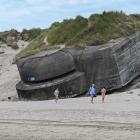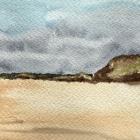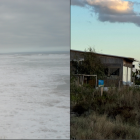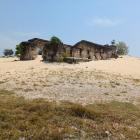Only the Dunes Could
I grew up in L’Islet-sur-Mer, a village in Québec populated by hundreds of sailors through the past centuries. In Canada, my village is known as the Sailors’ Homeland. Many of these sailors fought in the Atlantic, the English Channel, and the Mediterranean between 1939 and 1945, and they came to influence my life and my career in museology. They told me about their fears and their joys, their inner battles like those against the German U-Boote. They sank many of them but lost hundreds of their friends. From the cliffs of France, they were cannoned by seemingly indestructible German batteries. Shelled non-stop during the Normandy landings. Allied bombs barely damaged their structures. In my travels, I’ve seen these Atlantic Wall bunkers. I walked the beaches of Normandy, took dozens of photographs, recalling the stories of my old friends. I saw them at sea again, imagining them disembarking from landing crafts.
I have seen these bunkers up close, in ruins, sagging at the bottom of sand dunes. Lying like memories that don’t want to disappear and must not, if the memory of horror is to live on. Collapsed, fallen, useless! Not by bombs, but by the movement of the dunes, which have succeeded in doing what the fighting could not. Claude Prelorenzo points out that “the vestiges of horror are part of the memory of societies.” Unesco has inscribed on the world heritage list a number of testimonies to human folly, regardless of their architectural or urbanistic interest, which is often weak or non-existent. In fact, everything can be destroyed. Again, dunes can succeed where bombs could not. Where humans fail, nature reclaims its rights in the face of horror, leaving us with witnesses that echo the words of my sailor friends… No more war.


















